Darren SYLVESTER
Australian 1974–
You should let go of a dying relationship 2006
two channel colour video transferred to DVD, silent, 3 min 45 sec
Courtesy of the artist and Neon Parc, Melbourne and Sullivan+Strumpf, Sydney
© Darren Sylvester
Rendering the clips silent focuses the viewer entirely on the mood and emotion of the songs’ visual translation through the music video format. The mirroring effect that Sylvester creates through his performances, and the display of the dual videos, draws our attention to the fact that these performers and performances exist only on screens. As Jared Davis has written:
Our lives are clearly demarcated from the world of these artists, by their inaccessibility through the impossible window of our screens. At the same time, we project and compare ourselves with these pop icons, imagining as if we are looking in a mirror. In You should let go of a dying relationship, we can see ourselves, mirrored in Darren Sylvester mirroring himself in David Bowie and Kate Bush.’4
Beyond a direct connection to MTV, Rist’s video is also influenced by her deep interest in popular culture and in experimental and feature films. The artist has discussed the technical and philosophical similarities and differences between her work and these popular forms:
I use the camera to guide the viewer. I guide myself and I guide you as well … Some music videos utilise interesting camera work. Maybe this is part of the connection people see between MTV and my work. Music videos are different from most video art pieces where the camera work is often very rigid and strict … The only difference is I do not have to sell someone’s product with my video works. I don’t have to sell a band. I use the same media, but I’m privileged to convey purely poetical, philosophical, and political content.6
In Conversations wit de Churen II: All My Churen, 2003, Linzy draws on nostalgic childhood experiences of watching seemingly endless episodes of television soap operas always on in his family home: of these his favourites are Guiding Light, The Young and the Restless and The Bold and the Beautiful. The funny and melodramatic qualities of All my Churen are inspired by this style of ubiquitous TV programming:
I think that I was always interested in both comedy and drama. I was very into Def Comedy Jam and stuff like that when I was in high school, and so, if you take something like All My Churen, it’s a combination of the two – it follows the structure of a sitcom and a soap opera at the same time. But it all grew out of those aspirations of being a performer and an actor and filmmaker. I had all these dreams.7
Linzy’s video assimilates soap operas’ formulaic, recurring plotlines of intrigue, betrayal and heartache. Holland Cotter of The New York Times described the ‘Byzantine subplots’ created by the Linzy that pivot around the dramatic life of a young woman named Nucuazia:
If most of the characters, including Nucuazia’s sharp-tongued mother, soft-touch grandmother, wastrel brother and brusque corporate executive sister, share an uncanny family resemblance, it is because Mr. Linzy plays them all, brilliantly.8
- Dieter Daniels, ‘Television – art or anti-art? Conflict and cooperation between the avant-garde and the mass media in the 1960s and 1970s’, trans. Michael Robinson, Media Art Net <http://www.medienkunstnetz.de/themes/overview_of_media_art/massmedia/scroll/>, accessed 20 April 2015
- Robert Sam Anson, ‘Birth of an MTV Nation’, Nov. 2000, Vanity Fair, <http://www.vanityfair.com/news/2000/11/mtv200011>, accessed 20 April 2015. After two decades, MTV was being broadcast to 139 countries with a following of 40 million viewers – a cultural phenomenon for younger generations that has influenced fashion, graphic design, television programming and music itself.
- Gilbert Vicario, ‘Medianation: performing for the screen’, in Wendy Watriss (ed.), Contemporary U.S. Photography, FotoFest Inc., Houston, 2010, p. 221.
- Jared Davis, ‘Darren Sylvester’, in ART1, Australian Centre for Contemporary Art, Melbourne, 2010, available at <http://jareddavisprojects.com/texts/DarrenSylvester.pdf>.
- Pipilotti Rist quoted in Henry M. Sayre, ‘1990–2005: in the clutches of time’, in Amelia Jones (ed.), A Companion to Contemporary Art Since 1945, Blackwell, London, 2006, p. 12.
- ‘Interview with Pipilotti Rist by Rochelle Steiner’, in Rochelle Steiner, Wonderland, The Saint Louis Art Museum, Saint Louis, 2000, pp. 92–3.
- Kalup Linzy in Chan Marshall, ‘Kalup Linzy’, Interview, <http://www.interviewmagazine.com/art/kalup-linzy/#_>, accessed 20 April 2015.
- Holland Cotter, ‘Art in Review: Kalup Linzy’, New York Times, 25 March 2005.
